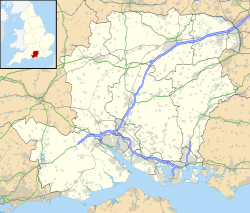| Fort Brockhurst | |
|---|---|
 Fort Brockhurst entrance | |
| Type | Palmerston Fort |
| Location | Gosport |
| Coordinates | 50°48′52.91″N1°9′17.01″W / 50.8146972°N 1.1547250°W |
| OS grid reference | SU 59600 02063 |
| Area | Hampshire |
| Built | 1858–1862 |
| Architect | William Crossman |
| Owner | English Heritage |
| Official name | Fort Brockhurst, Gosport |
| Designated | 7 Aug 1967 |
| Reference no. | 1013401 |

Fort Brockhurst is one of the Palmerston Forts, in Gosport, England, and a scheduled monument. [1] It is now an English Heritage property.
